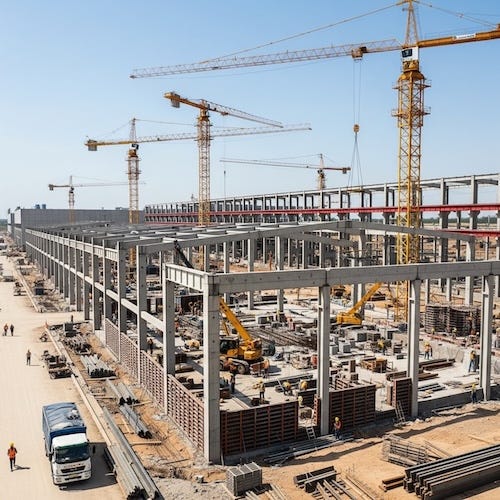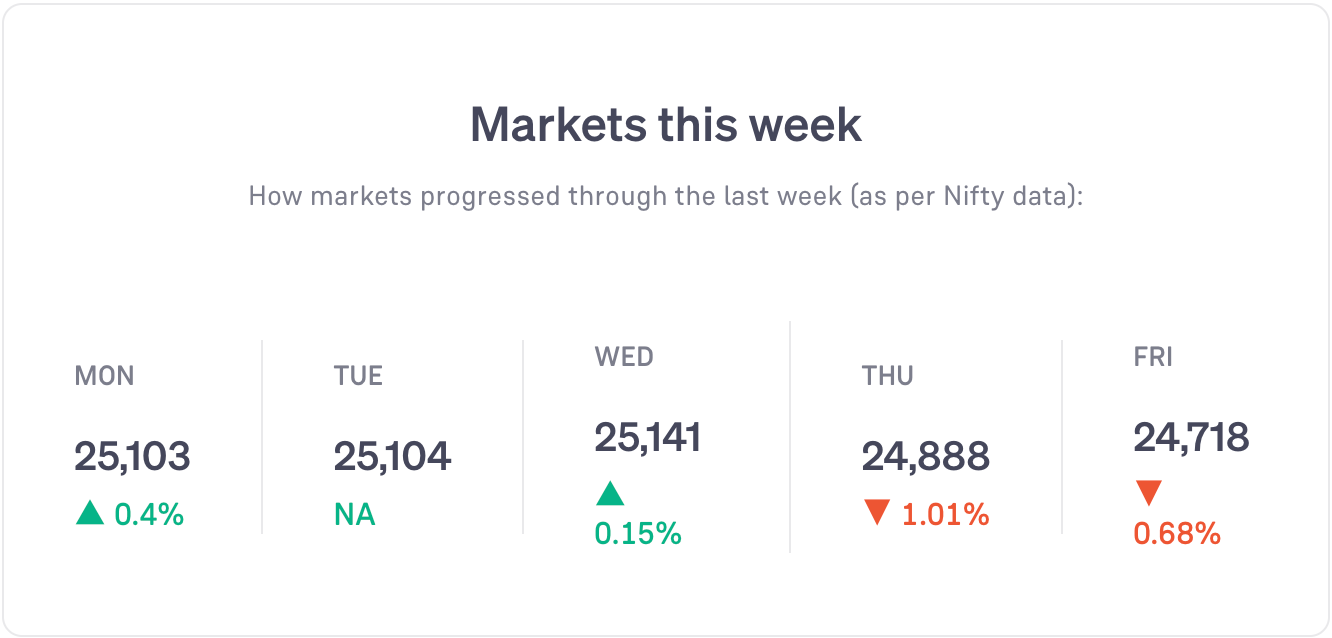Globalisation has peaked in the last 50-70 years.
It started with far-off countries like Japan, Taiwan, and South Korea. China hopped on the bandwagon in the 1980s and absolutely dominated manufacturing.
But why?
The answer is quite simple. They are better and cheaper.
The idea behind globalisation was this: some countries are better at doing certain things than others.
Corn grown in Saudi Arabia is always going to be more expensive than that grown in Brazil. Crude oil drilled in Saudi Arabia is cheaper than that drilled in Brazil.
Different parts of the world do different things better and cheaper. And they trade with each other.
You sell what you have more of. You buy what you have less of.
This is the central idea behind globalisation.
Concentrate on your strengths, and let the other things be taken care of by someone else (whoever’s strength that is).
This is basically why manufacturing reduced to a great extent in Western countries.
Skilled labour was more cheaply available in the Asian countries.
The west concentrated more on white-collar roles and excelled there.
Trump’s Election
The USA got a new president in 2016 – Donald Trump.
Trump came to office with a set of agendas. One of those was tariffs against China.
Once these tariffs started rolling out, companies all over the world realised that this was a new world order. Critical items coming out of China were more expensive to buy in the USA.
Trump wanted more companies to make items in the USA. He wanted Americans to buy items made by Americans.
This subject was crucial in getting Trump elected to office. He pursued it aggressively.
Companies felt the pain. They realised that depending only on Chinese factories was risky for them.
If all the items you use come from the same country, and that country suffers problems (like tariffs), you are in trouble.
It was around this time that many companies decided to diversify their factories.
India was a beneficiary of this.
Foxconn is famous for making iPhones in China. They moved some of the assembly work to the India factory in 2017 – starting with the iPhone SE.
Some time later, when they realised the factories were working well, they started making the iPhone XR in India.
And then, more production moved to India.
The iPhone 15 became the first flagship iPhone to be made in Indian ahead of its global launch.
Now, the company is talking about making 25% of all iPhones in the world in India.
Foxconn is not the only manufacturing company involved. More iPhone manufacturers have opened facilities in India, too.
Apple is only one company. Many other brands have entered India as well.
Trump Re-elected
In 2024, the US election results indicated that Trump had been voted back to power.
This time, he decided to continue his old agenda, tariffs, with even more vigour.
But unlike the previous time, this time, his focus was on all countries across the globe (including China).
A trade war ensued, where most major countries came under direct attack in the form of tariffs.
Many of those countries retaliated with tariffs of their own against America. China was one of the biggest retaliators.
China is also one of the biggest exporters of raw materials and finished goods.
Global supply chains are incredibly intricate. Raw materials and parts from many countries are used to assemble final products.
Many items suddenly started getting expensive. Some vanished from shelves altogether.
Critical raw materials and goods like medical equipment, network equipment, defence equipment, etc. are also a part of this global supply chain.
When the global supply chain experienced stress, countries felt the pinch.
Besides items needed for regular use, the lack of items needed for critical operations (healthcare, defense, etc) scared many countries to the core.
The ongoing worries about the China-Taiwan situation worsened this further. Everyone wants microchips for their computers and smart devices. Most of it is made in Taiwan.
Deglobalisation
Everybody wants their own factories.
Experiencing what it feels like to be at the mercy of other countries, many countries put extra effort towards making their own factories.
In the last few years, many countries have announced plans to start their own chip-making facilities. Many others are wanting their companies to open more factories within their borders.
Some are encouraging moving factories to friendlier countries that are situated closer to them.
De-globalising seems to be setting in.
What does this mean?
It means that some things will get more expensive. Some items are just more expensive to make within borders versus being made by a country that specializes in making them.
But that’s not it. This is where it gets tricky.
Many Americans have claimed that they would happily pay more for products made in America. The same has been said in many parts of the world.
But, how much more?
There would be limits after which even very patriotic people would opt for cheaper foreign-made goods.
Besides, making some things is just not possible because of a lack of skilled workforce. For example, there is a global shortage of chip engineers.
Where next?
It is hard to comment on this.
Countries are trying to build factories within their borders. Or at least closer to themselves, in countries with which they have good ties.
In some cases, it might be hard to make sense.
The textile industry needs high effort at low labour costs for it to work cheaply enough. It’s hard to imagine a Western country being able to do this.
In some cases, no matter what the cost, countries are incentivised to build factories within their borders.
Defence is a classic example of this. Everyone wants to be able to make their own missiles and guns.
And then we reach a category where it is hard to tell.
Household appliances, cars, and construction equipment – these can be made within many countries’ borders at a slightly higher cost.
Would people pay the slightly higher cost?
Many western countries are also realising something grave when they try to re-establish industries in their countries.
They used to be able to. But now they can’t.
That skill has been lost.
Many countries off-shored these jobs to China, Japan, Korea, and a few others. Now, they are trying to re-shore those jobs back to their country. Will it work?
In some cases, yes.
In some cases, yes, but with difficulty.
And in some cases, it is too difficult and time-consuming.
This is why iPhone manufacturing is being ramped up in India. It is also why so many countries are opening factories in India and Vietnam.
American companies are expanding within America and neighboring countries like Mexico.
European countries are exploring factories in eastern European countries that have lower labour costs.
This does mean a lot for most companies.
Companies that are involved in setting up new factories stand to benefit. Companies that are able to deal with this transition stand to benefit. Some companies stand to lose no matter what – they are either too big, or too slow, or limited by regulations.
Money will be spent on R&D, changing locations, setting up new supply chains, transporting, etc.
It seems like the era of globalisation is coming to an end.
The era of re-shoring is in.
But it is still too early to say we are entering an era of re-shoring.
We don’t know if re-shoring is here to stay, or if globalisation will make a comeback soon, as inefficiencies rise.
But for now, it is happening.
It has pros and cons.
Investors in India are probably luckier. A lot of reshoring activities can benefit us.
Quick Takes
+ The Indian government received a dividend of Rs 8,076.84 crore from SBI for FY 2024-25.
+ Japan’s GDP contracted 0.2% year-on-year in the Jan-March quarter. It grew 2.2% in the previous quarter.
+ China’s annual inflation rate remained unchanged for the 3rd time at -0.1% in May.
+ Continental, a tyre-making company, is planning to invest Rs 100 crore in India to expand production capacity for tyres for passenger vehicles and light trucks.
+ Equity mutual funds experienced a net inflow of Rs 19,013 crore in May (compared to Rs 24,269 crore net inflow in April). On the other hand, debt funds saw a net outflow of Rs 15,908 crore (compared to a net inflow of Rs 2.19 lakh crore in April): AMFI
+ Systematic Investment Plan (SIP) contributions reached an all time high of Rs 26,688 crore in May (compared to Rs 26,632 crore in April): AMFI
+ BigBasket is planning to introduce 10-minute food delivery services across India by March 2026.
+ SEBI is launching a verified UPI handle system for intermediaries to improve fee payment security and transparency. Investors can also authenticate intermediaries on the upcoming SEBI Check platform, starting from 1 October.
+ The USA’s annual inflation rate rose to 2.4% in May, compared to 2.3% in April. Core inflation (excludes volatile food and fuel) remained unchanged at 2.8%.
+ The central government approved two multi-tracking projects in 7 districts of Jharkhand, Karnataka, and Andhra Pradesh, costing Rs 6,405 crore.
+ India’s retail inflation fell to 2.82% in May (compared to 3.16% in April). Food inflation fell to 0.99% (compared to 1.78% in April).
+ The National Stock Exchange of India (NSE) received SEBI’s approval to launch monthly electricity futures contracts.
+ The Indian government reduced the Basic Customs duty on major imported crude oils from 20% to 10%.
+ The UK’s annual GDP growth rate fell to 0.9% in April, compared to 1.1% in March.
+ India and China have agreed to fast-track the process of resuming direct flights. Direct flights between India-China have been suspended since the pandemic: Ministry of External Affairs
+ India’s forex reserves rose by $5.17 billion to $696.66 billion for the week that ended on 6 June. Gold reserves rose by $1.58 billion to $85.89 billion.
+ Garuda Aerospace established a facility near Chennai for the indigenous production of agricultural drones. The initiative aims to boost local manufacturing and reduce reliance on imported components for farming.
6-Day-Course
Theme of the week: most common money-related scams
We’ve reached the end of this week’s course that started on Monday. Here’s a test you should take. Get pen and paper!
Question 1:
When you receive an email, what small detail can help you spot a phishing scam?
-Spelling errors
-Has attachments
-Has an official logo
Question 2:
In a SIM swap scam, the scammer can use your phone number to receive OTPs and steal money.
-True
-False
Question 3:
What is a common sign of job offer, lottery, or loan scams?
-Offering free gifts
-Quick approval
-Asking for a deposit
Question 4:
If a website looks like a popular e-commerce site, it is always safe to place an order.
-True
-False
Question 5:
What is one way malware scams steal your sensitive information?
-Block phone signal
-Spy on your activity
-Slow down internet
Answers:
Q1: Spelling errors
Q2: True
Q3: Asking for a deposit
Q4: False
Q5: Spy on your activity
The information contained in this Groww Digest is purely for knowledge. This Groww Digest does not contain any recommendations or advice.
Team Groww Digest






